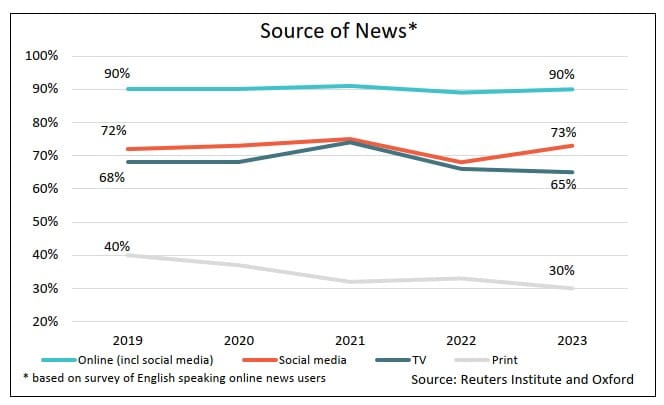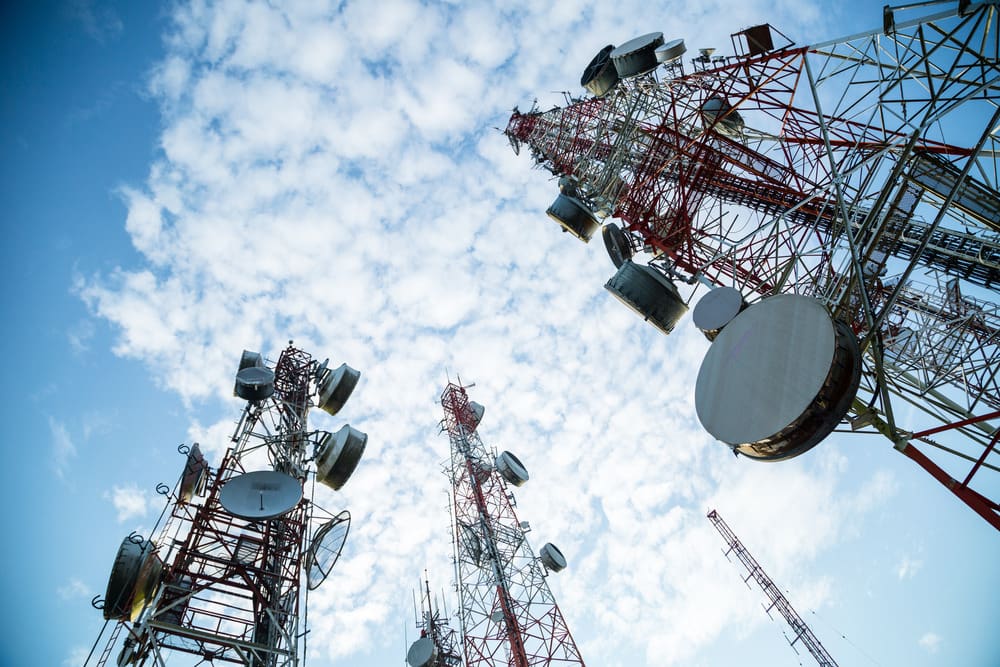The rapid transformation of household internet access in South Africa
History of internet access in South Africa
As with most innovations, internet access was relatively expensive when it was first introduced. Sources of information available were much more limited than they are today. In South Africa, access to the internet was sporadic and not ubiquitous, and required the use of a PC or laptop attached to the snail’s pace of analogue data transmission.
Who Owns Whom’s report on the print and digital media industry highlights the inevitable changes that come with progress which in this instance, reflected the loss of market share and circulation for print media and the growing presence of digital channels which have made access to information pervasive.
Inline with progress in terms of internet accessibility and availability, a combination of the vast improvement in wireless data transmission and the advent of smartphones considerably widened access and the internet use by many more people in South Africa.
The growth of internet access for South African households
Notably, the advancements to household internet access were all produced in a competitive environment, where different role players continued to add different services and to improve, leading to cost reduction. This is evident in internet access growing to 78.9% of households in 2024 from 35.2% in 2011, even with slow economic and household income growth, according to the report.
Print media had to migrate to online platforms to maintain readership. While some made this transition successfully, there is a general complaint that the profits previously made from print circulation have not fully recovered. This is an inevitable consequence of productivity and efficiency gains in the economy as well as changing patterns in the way the public consumes content. In all, consumers are better off, and the economy gains in terms of overall wealth creation and improving access for most of the population. Digital media has offered many more opportunities at a lower transaction cost, making more information accessible and available. These aspects improve the lives and well-being of citizens.
What is the impact of the internet on traditional media?

Services such as Facebook, Instagram, and specifically TikTok, which was able to take a big slice in market share from its closest competitors, are giving traditional print media a run for their money.
Successful traditional print media companies adapted to the shifting landscape by investing in user-friendly websites and apps to increase their reach. They also integrated social media into their mix to encourage user-generated content to enhance engagement. New services draw more readers and adapt to the kind of information provision and interaction users are looking for through data analytics and targeting content to relevant readers.
The graph indicates how imperative it is for traditional media to embrace online news delivery and platforms to remain competitive. Additionally, there is likely a much lower level of censorship.
A conundrum that is looming large with the proliferation of artificial intelligence and deep fakes is that lawmakers will have to find a way of regulating without stifling the positive aspects of bridging the divide.
The addiction to TikTok, whose use has been prohibited in government circles in the US and EU and is facing a complete ban in India, appears to be strong. The Daily Mail of 8 March 2024 reported that “Crying users ‘hammer’ lawmakers’ phones from school and tell them to vote against bill that could ban the app because of links to China”.
Effects of digital media on the youth
TikTok provides users, particularly the younger generation, with content they want to watch and read, in an easily accessible and fast paced nature.
Traditional media needs to find ways to improve their content and interaction to maintain and gain readership. As young people grow into adults, their critical thinking may increase, and they can discern what is important and relevant, what is entertainment and leisure, what is reliable information and what is fake.
The evolution of media in South Africa reflects a transformative journey from limited internet access and print dominance to a digital landscape marked by widespread connectivity and content consumption. Internet accessibility, propelled by improved wireless transmission and smartphone usage, has reshaped how information is disseminated and consumed. The overall impact has been positive, with increased household internet access and diverse content options. The rise of platforms like TikTok is not without challenges as they have prompted a need for regulation without stifling innovation.
Contact us to access WOW's quality research on African industries and business
Contact UsRelated Articles
BlogCountries Information and communicationSouth Africa
The AI Revolution in South Africa: Navigating the Unstoppable Tech Wave
Contents [hide] Tech trends in South Africa, like all over the world, are dominated by artificial intelligence (AI). As usual, initial reactions to new technology are often optimistic. The revolutionary...
BlogCountries Information and communicationSouth Africa
The Impact of streaming on music industry earnings in South Africa
Contents [hide] Historical evolution of the music industry From the revered gramophone, which was the first instrument capable of reproducing music and storing it on a flat disk, invented by...
BlogCountries Information and communicationSouth Africa
Telecommunications: a catalyst in African economic development
Contents [hide] The role of telecommunications in driving economic development Telecommunications serves as a backbone of modern economies and underpins various industries that are essential for economic activities, from financial...





